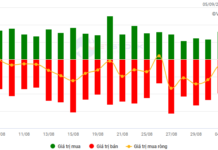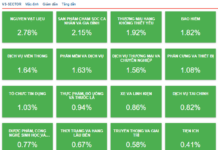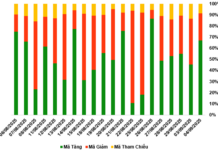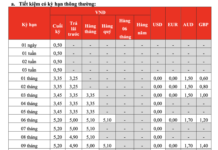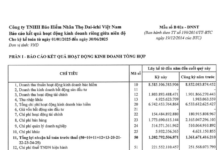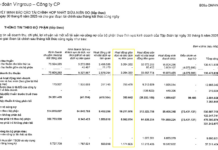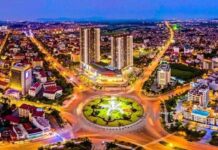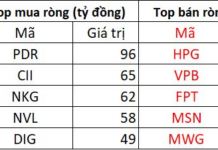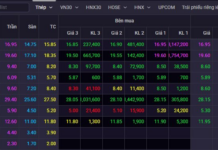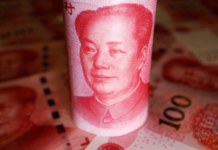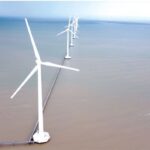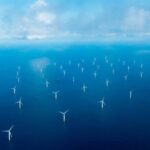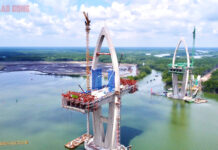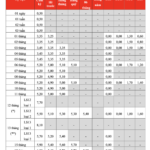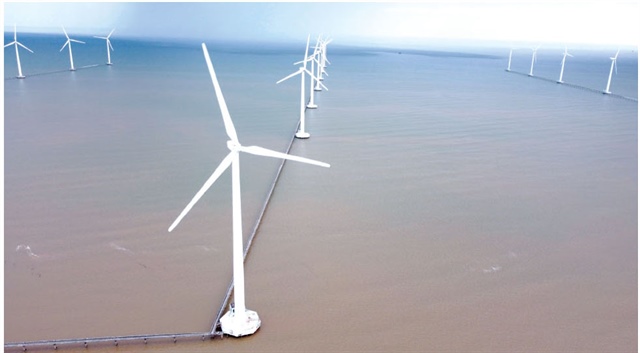
Cà Mau aims high with its ambitious goals for the renewable energy sector, as reported by TTXVN. The provincial People’s Committee of Ca Mau has recently approved a plan that outlines the direction of Vietnam’s national energy development strategy up to 2030, with a vision towards 2045. Notably, they aim to become the leading hub for renewable energy in the Mekong Delta region and a significant exporter of renewable energy nationwide by 2030. |
By 2030, the province intends to provide an additional 960MW of wind power, 24MW of biomass power, 16MW of power generated from solid waste, and 15MW of rooftop solar power to the region. They will also develop a synchronized transmission grid system to accommodate these new power sources and meet the electricity demands of the area.
To achieve these goals, Ca Mau will prioritize the unlimited development of renewable energy sources for export and the production of new forms of energy such as hydrogen and green ammonia. They have set specific targets for exporting electricity generated from renewable sources: 2,000MW by 2031, 3,000MW by 2035, and a significant jump to 5,000MW by 2040. Additionally, they plan to develop renewable energy sources that do not feed into the grid to produce hydrogen for domestic use and export.
The province will also tap into the potential of renewable energy in Dam Doi and Ngoc Hien districts, as identified in the Ca Mau plan for 2021-2030, with a vision towards 2050. This will facilitate the production of approximately 86,248 tons of hydrogen per year. Furthermore, Ca Mau will implement programs to promote energy conservation and minimize energy losses, aiming for a 7% energy savings rate by 2030 and 14% by 2045.
In the short term, Ca Mau will coordinate and provide support to the Vietnam Oil and Gas Group for the timely implementation of the Khanh My-Dam Doi field development project. This project is expected to supply gas to the Ca Mau gas-power-fertilizer cluster by the second quarter of 2027. They will also prioritize inviting investment in a system of floating storage and regasification units (FSRU) capable of importing liquefied natural gas (LNG) to meet the gas demands of the Ca Mau region, with a capacity of approximately 1-3 million tons per year during the period of 2026-2030.
Currently, Ca Mau has 16 approved wind power projects with a total capacity of 1,000 MW. In addition, there are 41 new projects in the pipeline, including 29 onshore, nearshore, and offshore wind power projects (totaling 7,712 MW) and 10 gas power and other power source projects (totaling 11,934 MW).
Trúc Đào
– 11:54 28/12/2024
“Cà Mau’s Ambitious Vision: Targeting 5,000MW of Renewable Energy Exports by 2040”
The Ca Mau Provincial Government has set its sights on an ambitious renewable energy future, with plans to export a substantial amount of power generated from renewable sources. By 2031, the province aims to export 2,000MW of electricity, with this figure set to increase to 3,000MW by 2035 and an impressive 5,000MW by 2040. This forward-thinking strategy positions Ca Mau as a leader in sustainable energy development, paving the way for a greener and more resilient future.
A Plethora of Incentives: Unlocking the Potential of Renewable Energy and Powering a Sustainable Future
The Ministry of Industry and Trade is drafting a decree detailing certain articles of the Law on Power and Renewable Energy Development.
Proposed Foreign Capital Limit of Up to 65% in the Offshore Wind Power Project Consortium
The Ministry of Industry and Trade has proposed an offshore wind power project with an attractive incentive package. During the construction phase, the project will be exempt from sea area usage fees, and for the first 12 years of operation, these fees will be reduced by 50%. Notably, the proposal includes a requirement for foreign investors to partner with Vietnamese enterprises, with foreign ownership not exceeding 65%.

